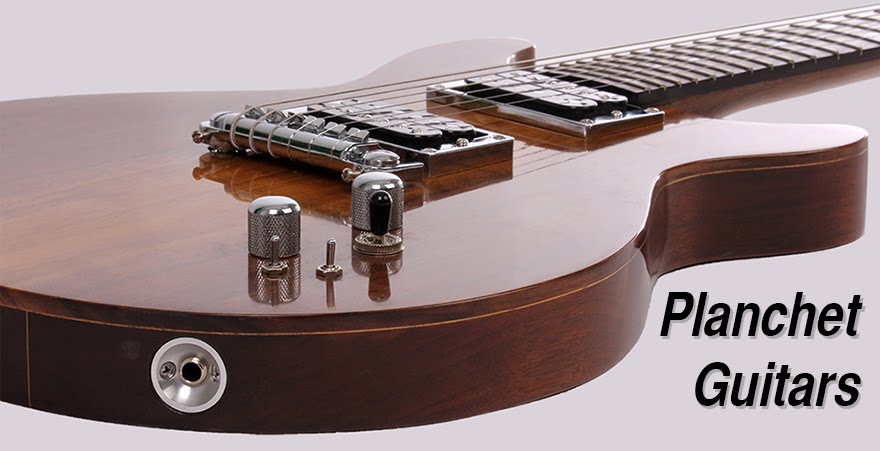Several months ago when I first tried French Polishing I ran into trouble with the alcohol in the shellac causing what I referred to as a bleeding affect. This essentially lifted the dye out of the wood and caused a swirling affect. So French Polishing ended up not being an option on the dyed bodies.
This problem also resurfaced last week when I attempted to French Polish the Red Special body. Since I wasn't using a dye on the wood, I thought the bleeding problem wouldn't pop up. But as it turns out the the alcohol in the shellac had the same effect. The red from the Padauk was lifting and running into the maple. It's faint but you can see it in the top two photos.
According to the Wikipedia entry for Padauk "Most
Pterocarpus [Padauk] woods contain either water- or alcohol-soluble substances and can be used as dyes."
I switched to a spray method in an attempt to avoid this problem. This worked wonders on the Red Special and the Tele body. However, the Strat still has issues. Instead of the swirling, this time I encountered a bubbling effect. I'm pretty sure that this is being caused by the spray spitting. So, I re-sanded the top (yet again) and re-sprayed. And yet I am still seeing the same effect.

















